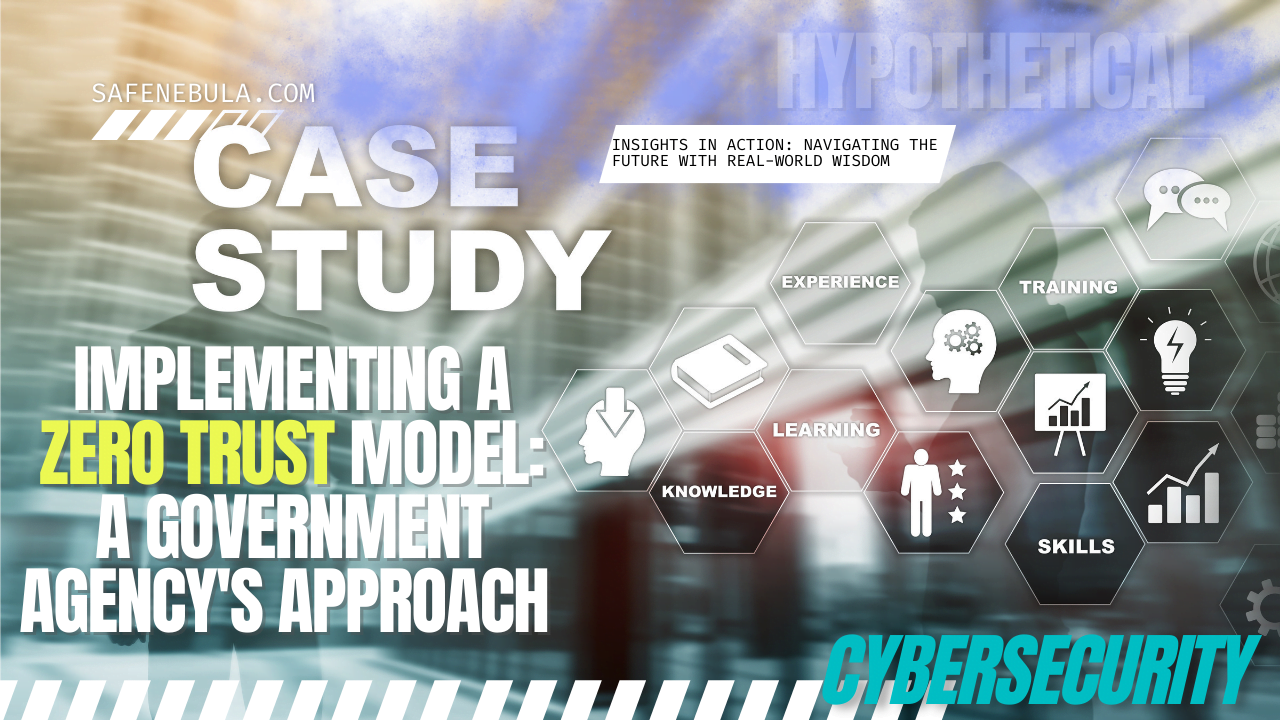In the ever-evolving landscape of cybersecurity, adopting a Zero Trust model has become a cornerstone strategy for many organizations seeking to enhance their security posture. This case study delves into the journey of a government agency, SecureGov, as it transitions towards implementing a Zero Trust architecture. By examining SecureGov’s motivations, the challenges encountered during deployment, and the outcomes of this strategic shift, this study provides valuable insights into the complexities and benefits of adopting Zero Trust principles.
Motivations for Adopting Zero Trust
1. Increasing Cyber Threats: In response to a rising number of sophisticated cyber-attacks targeting government data, SecureGov recognized the need for a more robust security framework.
2. Digital Transformation Initiatives: As SecureGov embarked on digital transformation, the traditional perimeter-based security model proved inadequate for protecting cloud-based assets and remote workforce.
3. Regulatory Compliance: Adhering to stringent regulatory requirements for data protection and privacy further propelled SecureGov towards a Zero Trust approach.
Deployment Challenges
1. Legacy Systems Integration: Integrating Zero Trust principles into SecureGov’s existing legacy systems presented significant technical and logistical challenges, requiring extensive system upgrades and modifications.
2. Cultural Shift: Moving from a trust-based to a Zero Trust model required a substantial cultural shift within the organization, necessitating comprehensive training and change management efforts.
3. Scalability and Complexity: Designing a Zero Trust architecture that could scale with SecureGov’s operations, while managing the complexity of implementation, demanded careful planning and execution.
Implementation Strategy
1. Identify Sensitive Data and Assets: SecureGov began by mapping out its critical data and assets, establishing clear visibility into what needed protection.
2. Microsegmentation: By dividing their network into smaller, more manageable segments, SecureGov could enforce granular access controls, limiting lateral movement in case of a breach.
3. Multi-Factor Authentication (MFA) and Least Privilege Access: SecureGov implemented MFA and ensured that users had access only to the resources necessary for their roles, minimizing the potential impact of compromised credentials.
4. Continuous Monitoring and Automation: Deploying continuous monitoring tools and automating threat detection and response enabled SecureGov to identify and mitigate threats in real-time.
Outcomes of Adopting Zero Trust
1. Enhanced Security Posture: The transition to a Zero Trust model significantly strengthened SecureGov’s defenses against cyber threats, reducing the incidence of successful attacks.
2. Improved Compliance: Zero Trust principles helped SecureGov meet and exceed regulatory compliance standards, ensuring the protection of sensitive government data.
3. Increased Operational Efficiency: With clearer visibility into network and data flows, SecureGov could optimize its operations and resources more effectively.
4. Cultural Evolution: The shift to Zero Trust fostered a culture of security awareness across the agency, with employees becoming more vigilant and proactive in their cybersecurity practices.
Conclusion
SecureGov’s journey towards implementing a Zero Trust model underscores the critical role of advanced security frameworks in today’s cybersecurity landscape. Despite the initial challenges, the outcomes achieved by SecureGov illustrate the tangible benefits of embracing Zero Trust principles, including enhanced security, compliance, and operational efficiency. This case study serves as a blueprint for other government agencies and organizations considering Zero Trust, highlighting the importance of meticulous planning, stakeholder engagement, and continuous adaptation in the pursuit of cybersecurity excellence.

